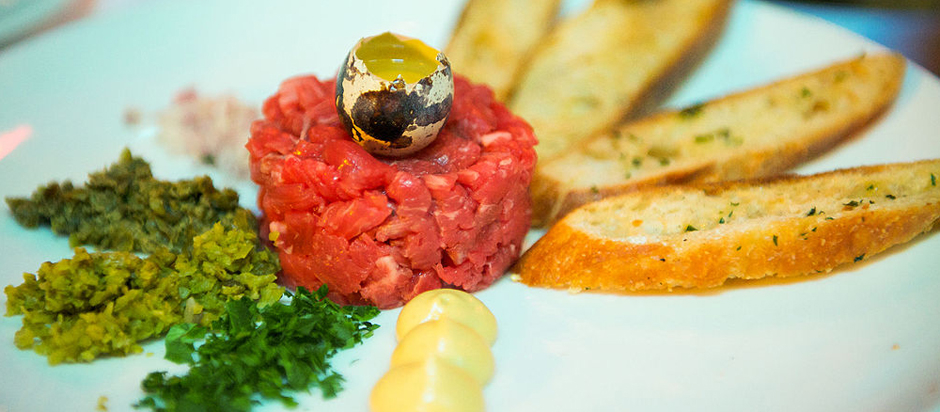Terrible story about seven people sickened, one very seriously, from eating steak tartare at a Montreal restaurant. Eating raw meat is a risky business, but poisoning from steak tartare is rare because the dish is usually served only in high-end restaurants where hygiene is the rule and the meat is supplied by reliable butchers. Incidentally, "steak tartare" contrary to popular myths has nothing to do with Tatars (or sometimes spelled Tartars.) The story that circulates talks about the Tatars having a fondness for horse meat (which is true) but not having access to fire on the steppes, they resorted to eating the meat raw. To tenderize it they supposedly cut it into thin slivers and put it under their saddles; thus was borne "steak tartare." Nope. The dish derives its name from the fact that it was commonly served with "sauce tartare" which actually may have some Tatar origins. But this is beside the point.
The point is that numerous species of E. coli bacteria live in the guts of animal, most of them harmless. But some, like E. coli 0157:H7 produce a toxin that can penetrate the human intestine and enter the bloodstream wher it destroys red blood cells and eventually causes kidney problems. "Hemolytic uremic syndrome" can be deadly. When an animal is butchered it is possible that the intestines are nicked and its content contaminate the meat. If the meat is cooked to a temperature of 71 C, the bacteria and its toxin are destroyed. So even if a steak is contaminated on the outside, it can be eaten rare because bacteria do not penetrate significantly and the ones on the surface are killed. But hamburger is a different business because the "outside" becomes the "inside" when the meat is ground. Commercially packaged hamburger may come from grinding meat sourced from many animals so the likelihood of contamination is increased as compared with a piece of meat ground in front of you by a butcher. Safety dictates that unless you have great trust in your butcher, hamburger should be cooked until there is no pink inside. Steak tartare is really raw hamburger mixed with spices. If the cut is contaminated on the outside then the mixing distributes the bacteria throughout. Raw meat, however, is not the only way to encounter E. coli. There have been cases of spinach being contaminated probably from manure as well as unpasteurized apple juice. Apples are picked up from the ground to make juice and you never know what animal pooped there. And if a waiter doesn't wash hands properly after going to the bathroom... well...you know what can happen. In comparison to all the cases of food poisoning that occur, the ones attributed to steak tartare are rare indeed. But they make the news. No doubt about it though, eating is a risky business. Not eating is riskier.







